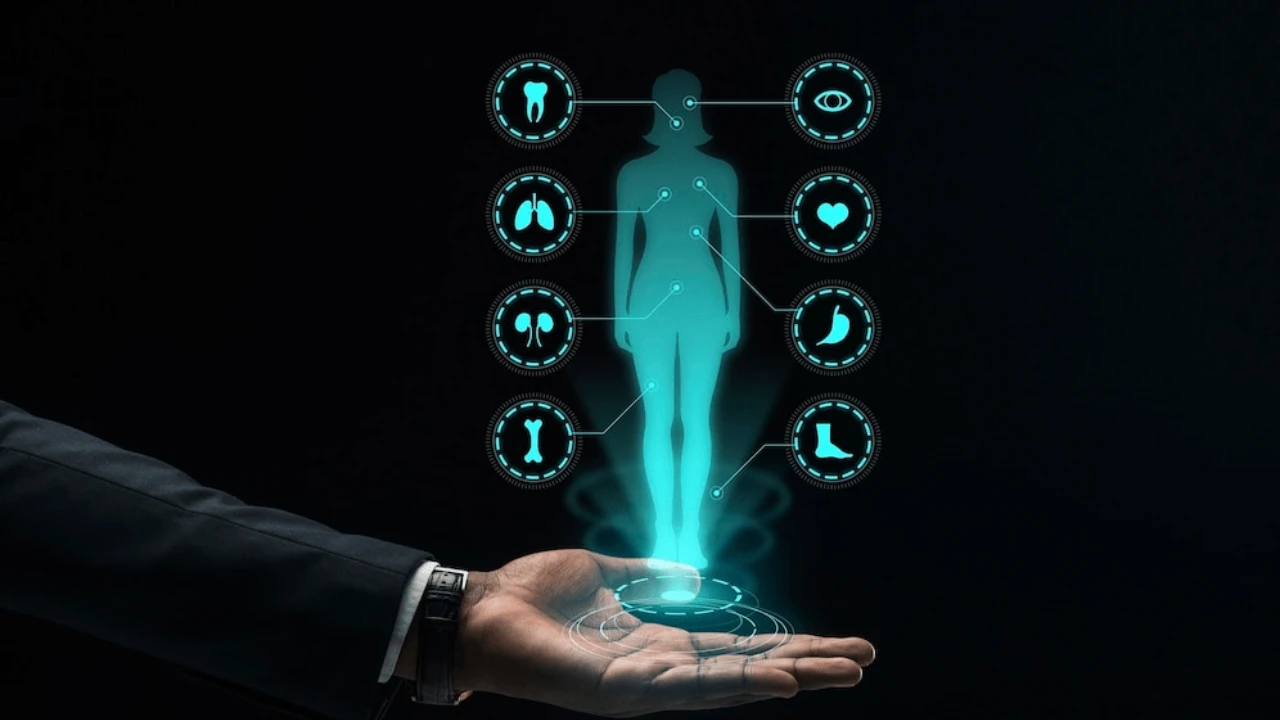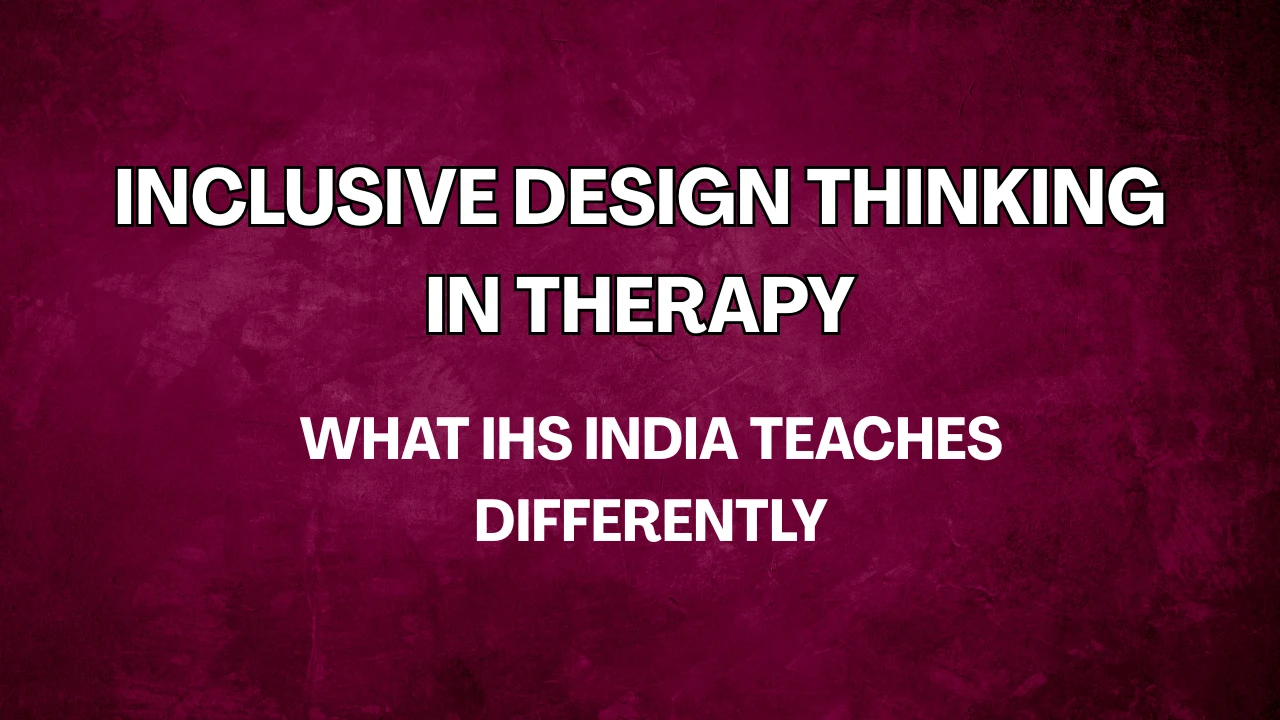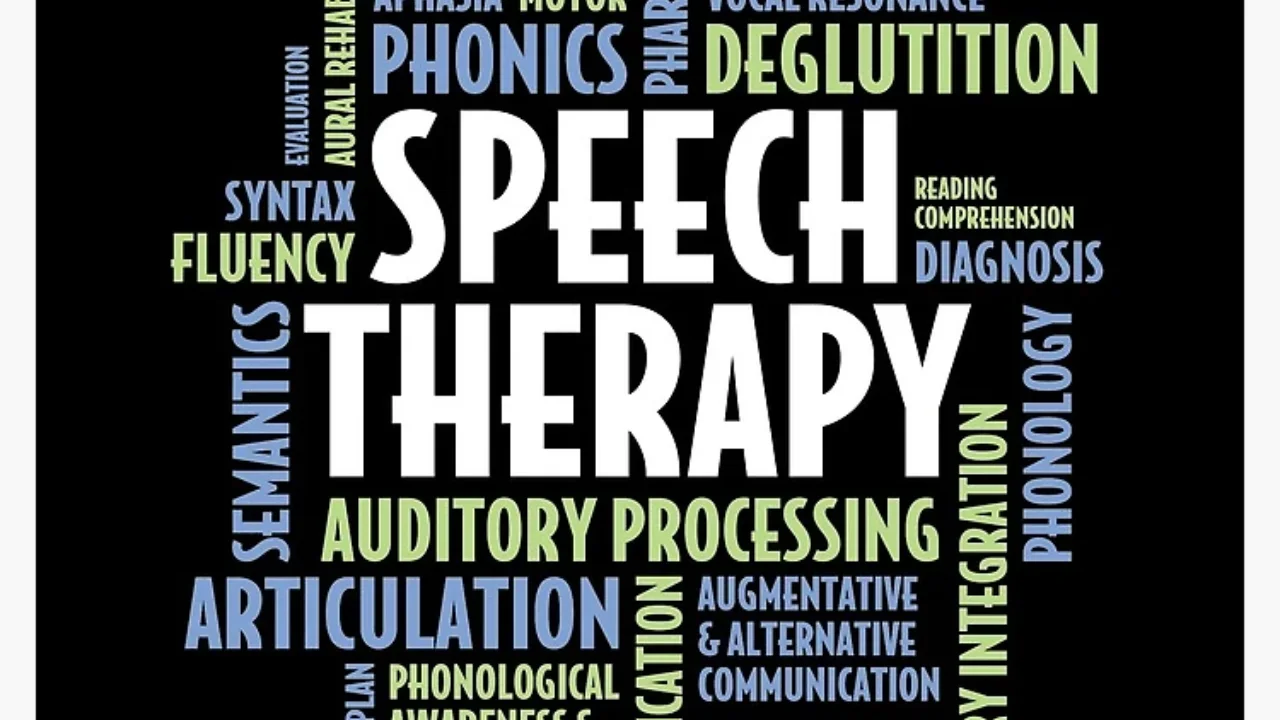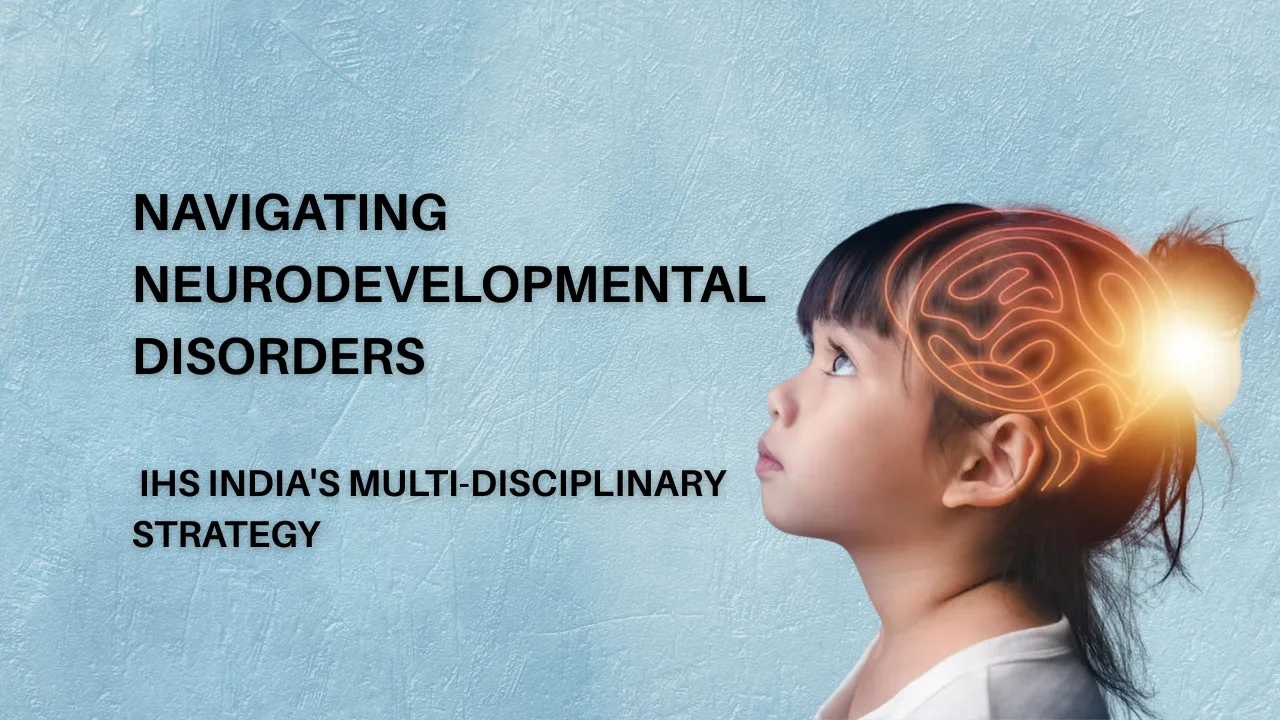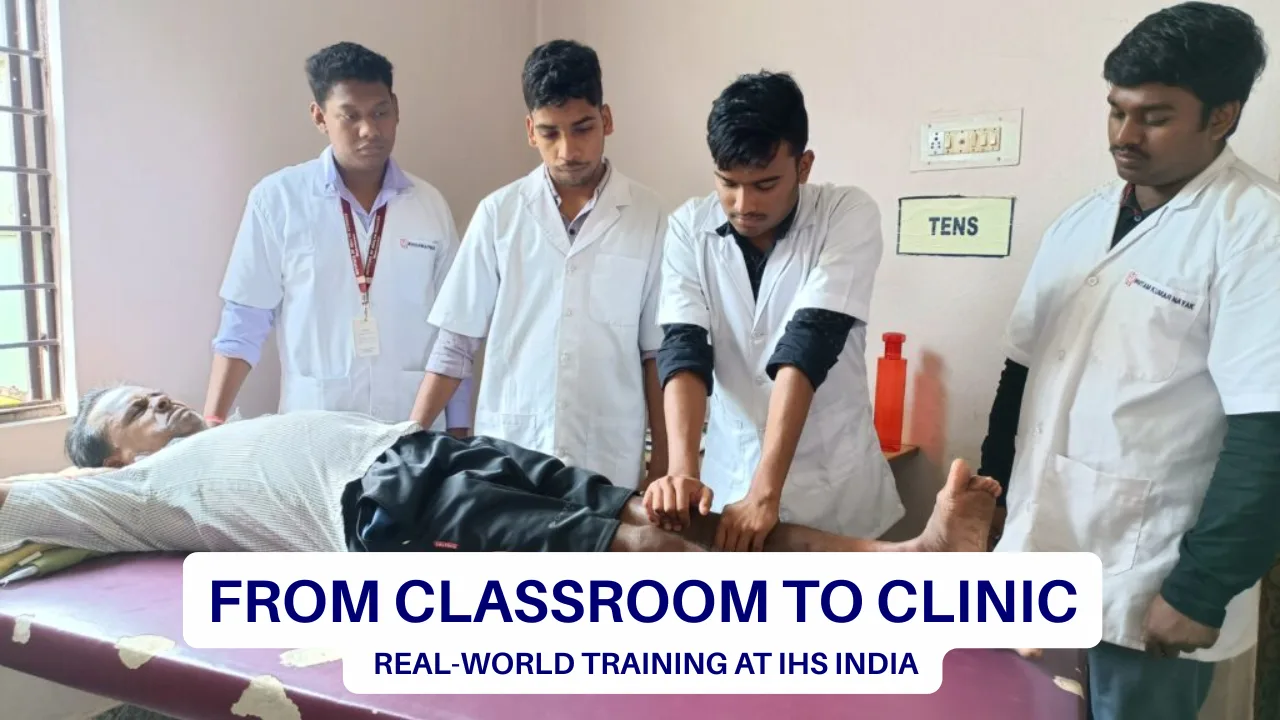IHS India: IHS India is stepping boldly into the future of rehabilitation by integrating cutting-edge technologies into its healthcare programs. As physical therapy and recovery continue to evolve, institutions like IHS India are leading the way with artificial intelligence and wearable technology that not only support patients during recovery but also provide professionals with smarter tools for monitoring, adapting, and improving care plans.
This article dives deep into how IHS India is reimagining therapy by blending healthcare expertise with intelligent tech. From motion sensors that track real-time progress to AI platforms that adjust therapy in real-time, we explore how these innovations are shaping a smarter, more effective rehabilitation process for both learners and patients alike.
IHS India: Blending Innovation and Care through AI and Wearables
At the core of IHS India’s approach to healthcare education lies a clear vision—to prepare students and professionals to deliver care that is not only compassionate but also tech-enabled. In rehabilitation, this means applying AI in therapy and wearable devices to support real-time recovery tracking, automate data analysis, and personalize treatment plans. These tools don’t replace human therapists—they enhance their ability to observe, guide, and respond faster. As students train with these digital health tools, they gain both clinical expertise and technological fluency, preparing them to work at the forefront of smart rehabilitation across hospitals, clinics, and home care environments.
Overview of Tech-Enabled Rehabilitation at IHS India
| Technology | Purpose | Key Benefits |
| Wearable Trackers | Monitor motion, steps, and posture | Real-time progress feedback for patients |
| AI Algorithms | Analyze therapy performance and patterns | Adaptive recovery plans tailored to patients |
| Digital Health Apps | Guide home exercises and track daily activity | Increases adherence and motivation |
| Remote Monitoring Tools | Enable distance-based care and check-ins | Extends therapy access beyond hospital walls |
Smart Devices Meet Smart Therapy
In rehabilitation, timing and consistency are everything. Traditional therapy methods rely heavily on in-person observations, which may miss subtle changes in progress. IHS India has taken a new path, introducing wearable devices such as motion bands, posture sensors, and digital footpads that offer high-resolution tracking of body movements during therapy sessions.
These wearables are used by students during hands-on sessions and also featured in community outreach initiatives. They offer detailed data on limb angles, joint stress, and range of motion. Therapists, in turn, get a live view of patient improvement. When used consistently, the devices act as an extension of the clinician’s eye—providing continuous, unbiased insight that improves patient tracking and overall therapy effectiveness.
AI in Therapy: The Brain Behind the Tech
While wearables collect data, artificial intelligence gives that data meaning. IHS India has implemented AI-based platforms in its rehabilitation training that can evaluate performance trends, detect inconsistencies, and suggest personalized updates to therapy routines.
Instead of relying solely on standard therapy charts, these systems offer students and practitioners insight into how each patient is responding. For example, if a stroke survivor is not meeting expected recovery markers, the AI might recommend focusing more on balance exercises or reducing resistance during stretching. This kind of smart adjustment not only saves time but improves outcomes by preventing plateau or regression in recovery.
In the classroom, students at IHS India learn to interpret these AI insights and apply them in real cases, gaining experience that blends human understanding with technological precision.
Improving Patient Motivation and Engagement
One of the most overlooked parts of physical recovery is emotional endurance. Patients often lose motivation due to slow visible progress. By integrating digital rehabilitation tools that provide visual dashboards, motivational badges, and measurable milestones, IHS India has transformed the way patients engage with their recovery.
Instead of just hearing they are doing well, patients can see it. They can compare today’s joint angle to last week’s, or view how their gait has improved over time. With smart apps, reminders and interactive check-ins help patients stay on track even outside the therapy center. This approach has proven especially helpful in rural outreach programs and home-based recovery, where consistency can be hard to maintain without support.
Benefits of Tech-Integrated Rehabilitation
- Enhanced Therapy Precision: Devices measure physical movements with accuracy, giving better feedback to therapists.
- Faster Adaptation: AI allows real-time adjustment of therapy sessions based on individual recovery speed.
- Improved Patient Compliance: Visual results and reminders improve patient involvement in therapy plans.
- Remote Access to Care: Tools enable patients to receive guided therapy even from remote locations.
- Data-Backed Decisions: Therapists rely on clear, continuous data, not assumptions, for planning and progression.
Faculty and Student Training at IHS India
To ensure future healthcare professionals are ready for a tech-forward world, IHS India has added modules focused on rehabilitation technology to its core training programs. These modules include workshops, lab sessions, and field practice where students learn to use, maintain, and evaluate wearable tools and AI platforms.
Faculty play a crucial role in this shift by undergoing continuous training in the latest tools and integrating them into project-based learning. Students don’t just study devices—they use them with simulated and real patients, gaining firsthand experience in blending empathy with technical skill.
This practical exposure gives graduates from IHS India a clear edge when entering hospitals, rehab centers, or digital health startups.
Challenges in Adopting Technology
Despite the promise of smart therapy, challenges remain. Some patients hesitate to wear unfamiliar devices, particularly older individuals who are less tech-savvy. There’s also the matter of cost—while wearable and AI tools are becoming more affordable, they’re still out of reach for some clinics and families.
Another concern is over-reliance. Students and professionals must learn to balance what the data says with what the patient feels. That’s why IHS India places emphasis on human observation, compassion, and direct feedback, even as tech plays a stronger role. The goal is not to replace human care but to reinforce it with smarter tools.
Success Stories from the Field
In a pilot program launched by IHS India, students working with orthopedic patients used wearable devices to measure recovery after knee surgery. The data helped therapists spot small improvements that traditional observation would have missed, leading to earlier transition to advanced exercises and shorter recovery time.
In another case, AI tools helped adapt therapy for a patient with limited mobility, reducing strain and increasing comfort. The patient’s motivation grew as progress charts improved, and by the end of the treatment cycle, they exceeded expected milestones. These case studies underline the real-world value of merging empathy with innovation.
FAQs
1. How are wearable devices used in rehabilitation at IHS India?
They track body movement, posture, and physical progress to provide accurate feedback and help therapists adjust sessions.
2. What makes AI helpful in therapy programs?
AI evaluates trends in patient recovery and suggests personalized changes in therapy, helping patients recover more efficiently.
3. Can patients use these tools at home?
Yes, many wearable devices and apps are designed for home use with remote monitoring by therapists.
4. Are students trained to use these technologies?
Absolutely. IHS India includes digital rehabilitation tools as part of its academic and hands-on training curriculum.
5. Do these tools replace physical therapists?
No, they support and enhance a therapist’s ability to deliver personalized, efficient care—not replace it.
Final Thought
IHS India is proving that effective therapy doesn’t just come from hands—it comes from minds open to innovation. By integrating AI in therapy and wearable devices, they’ve created a learning and healing environment where technology complements care. The result is better recovery, smarter professionals, and more engaged patients.
For anyone interested in the future of healthcare or looking to build a career in smart rehabilitation, this is where change is happening. Explore more, ask questions, or connect with IHS India to see how tech is transforming therapy for good.
